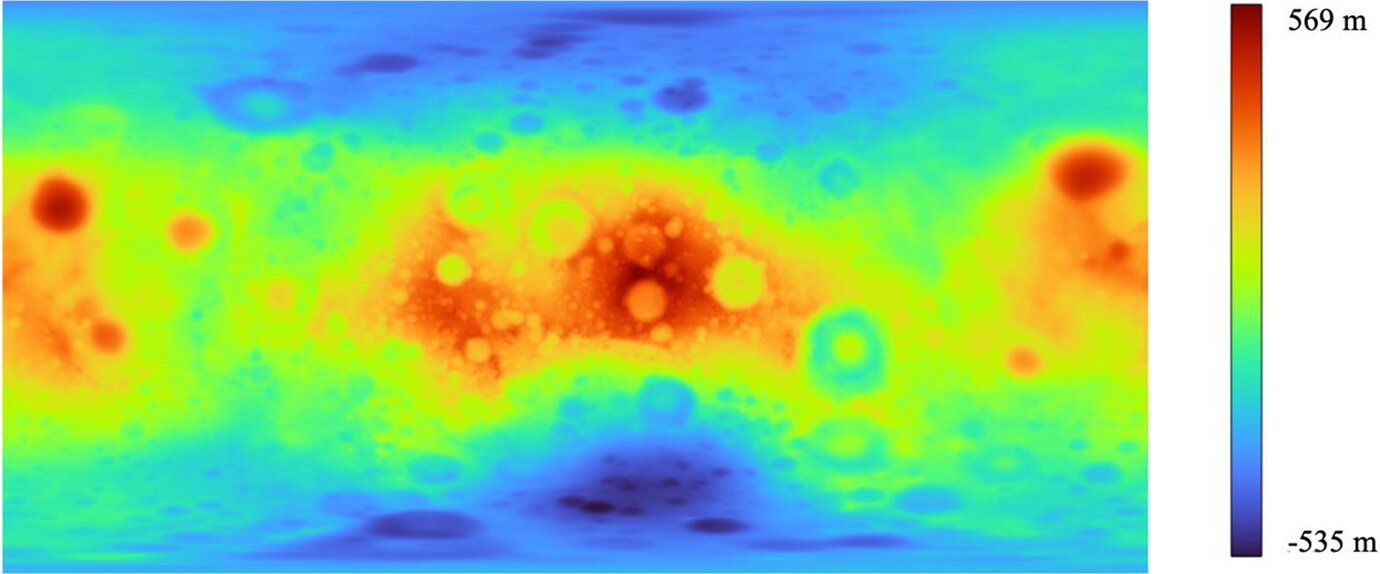Kamilla Cziráki, a geophysics student at the Faculty of Science of Eötvös Loránd University (ELTE), has undertaken innovative research to explore navigation systems for future lunar journeys.
In collaboration with Professor Gábor Timár, head of the Department of Geophysics and Space Sciences, Cziráki applied the mathematical principles of Fibonacci, an ancient mathematician who lived 800 years ago, to calculate parameters for the moon’s GPS system. Their groundbreaking findings have been published in the prestigious journal Acta Geodaetica et Geophysica.
With humanity poised to return to the moon after a 50-year hiatus, there is a critical need for effective lunar navigation methods. It is expected that future lunar vehicles will rely on satellite navigation systems similar to Earth’s GPS. However, the Earth’s GPS systems do not account for the actual shape of our planet. Instead, they use a rotating ellipsoid that best fits the geoid, an intersection of an ellipse furthest from the Earth’s center of mass at the equator and closest at the poles. The Earth’s radius is approximately 6,400 kilometers, with the poles located about 21.5 kilometers closer to the center compared to the equator.
The shape parameters of the moon’s best fitting ellipsoid and its significance have captivated researchers. Compared to the moon’s mean radius of 1,737 kilometers, the poles are approximately half a kilometer closer to the center of mass than the equator. To facilitate the adaptation of software solutions from Earth’s GPS system to the moon, two numbers are required: the semi-major and semi-minor axis of the ellipsoid.
The moon’s slower rotation, which matches its orbital period around the Earth, lends it a more spherical shape. While it is nearly a perfect sphere, it deviates slightly. Nevertheless, previous moon mapping has been based on the approximation of a spherical shape, and more intricate models have been used by researchers interested in understanding our celestial neighbor.
Excitingly, the approximation of the moon’s shape with a rotating ellipsoid had never been attempted before. The last similar calculations were conducted in the 1960s by Soviet space scientists, using data from the side of the moon visible from Earth.
Cziráki, a second-year geosciences student specializing in geophysics, collaborated with her supervisor, Timár, to determine the parameters of the rotating ellipsoid that best matched the theoretical shape of the moon.
They achieved this by using a database of the lunar selenoid, a potential surface, and extracting height samples at evenly spaced points on the surface. By gradually increasing the number of sampling points from 100 to 100,000, they determined that the stability of the two parameters was reached at 10,000 points.
A crucial aspect of their work involved developing a method to uniformly distribute N points on a spherical surface. Cziráki and Timár selected the simplest solution, known as the Fibonacci sphere. This method, rooted in the teachings of Leonardo Fibonacci, an esteemed mathematician from 800 years ago, is implemented through concise and intuitive coding. To verify their results, the same method was applied to Earth, resulting in a good approximation of the WGS84 ellipsoid utilized by the GPS system.
More information:
Kamilla Cziráki et al, Parameters of the best fitting lunar ellipsoid based on GRAIL’s selenoid model, Acta Geodaetica et Geophysica (2023). DOI: 10.1007/s40328-023-00415-w
Citation:
An 800-year-old mathematical trick could help with lunar navigation (2023, July 25)
retrieved 26 July 2023
from https://phys.org/news/2023-07-year-old-mathematical-lunar.html
This document is subject to copyright. Apart from any fair dealing for the purpose of private study or research, no
part may be reproduced without the written permission. The content is provided for information purposes only.
Denial of responsibility! TechCodex is an automatic aggregator of the all world’s media. In each content, the hyperlink to the primary source is specified. All trademarks belong to their rightful owners, and all materials to their authors. For any complaint, please reach us at – [email protected]. We will take necessary action within 24 hours.

Jessica Irvine is a tech enthusiast specializing in gadgets. From smart home devices to cutting-edge electronics, Jessica explores the world of consumer tech, offering readers comprehensive reviews, hands-on experiences, and expert insights into the coolest and most innovative gadgets on the market.


